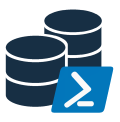Ecosyste.ms: Awesome
An open API service indexing awesome lists of open source software.
https://github.com/dataplat/dbaclone
👯 Clone SQL Server databases using PowerShell previously named PSDatabaseClone
https://github.com/dataplat/dbaclone
Last synced: 3 months ago
JSON representation
👯 Clone SQL Server databases using PowerShell previously named PSDatabaseClone
- Host: GitHub
- URL: https://github.com/dataplat/dbaclone
- Owner: dataplat
- License: mit
- Created: 2018-07-25T13:04:32.000Z (almost 6 years ago)
- Default Branch: development
- Last Pushed: 2022-10-15T06:52:38.000Z (over 1 year ago)
- Last Synced: 2024-01-15T18:13:15.774Z (5 months ago)
- Language: PowerShell
- Homepage: https://github.com/sqlcollaborative/dbaclone/wiki
- Size: 2.22 MB
- Stars: 124
- Watchers: 18
- Forks: 27
- Open Issues: 20
-
Metadata Files:
- Readme: readme.md
- Changelog: changelog.md
- Funding: .github/FUNDING.yml
- License: LICENSE
- Code of conduct: CODE_OF_CONDUCT.md
Lists
- awesome-stars - dbaclone
- awesome - dataplat/dbaclone - 👯 Clone SQL Server databases using PowerShell previously named PSDatabaseClone (PowerShell)
- jimsghstars - dataplat/dbaclone - 👯 Clone SQL Server databases using PowerShell previously named PSDatabaseClone (PowerShell)
README
| Master Branch | Development Branch |
| ------------- |-------------|
|[](https://ci.appveyor.com/project/sanderstad/dbaclone/branch/master) | [](https://ci.appveyor.com/project/sanderstad/dbaclone/branch/development) |
# dbaclone
 dbaclone is a PowerShell module for creating SQL Server database images and clones.
dbaclone is a PowerShell module for creating SQL Server database images and clones.
It enables administrator to supply environments with database copies that are a fraction of the original size.
Do you have any ideas for new commands? Please propose them as [issues](https://github.com/sqlcollaborative/dbaclone/issues) and let us know what you'd like to see.
Bug reports should also be filed under this repository's issues section.
Take a look at the [wiki](https://github.com/sqlcollaborative/dbaclone/wiki) to get more information on how to install, configure and use dbaclone.
## Why use dbaclone
* Save lots of space provisioning data to other locations
* Spend less time provisioning databases
* Create multiple local copies of a database from the same image
* Make sure there tests are accurate with up-to-date data
## Usage scenarios
There are multiple scenarios where you could use the module with
* Supply developers with a local copy of the database
* Provision non-production servers with production data
* Implement a CI/CD pipeline with production like copies
## Prerequisites
As with every piece of software we need to set some prerequisites to make this module work.
* Windows 10 (Professional, Enterprise or Education) or Windows Server 2012 R2 (Standard, Enterprise or Datacenter) and up
* PowerShell 5 or above
* SQL Server instance for saving image and clone information (dbaclone database)
* SQL Server instance to create the images (can be the same as for saving the information)
* Enough space to save to save one copy of the database (size of the image is the size of the database)
## How does it work
The process consists of the following steps:
1. Setup the module
2. Create an image of the database
3. Create a clone based on an image
It's that easy.
## Planned for future releases
* Default directories for the images
* Creation of multiple disks for a single database to rebuild original file structure